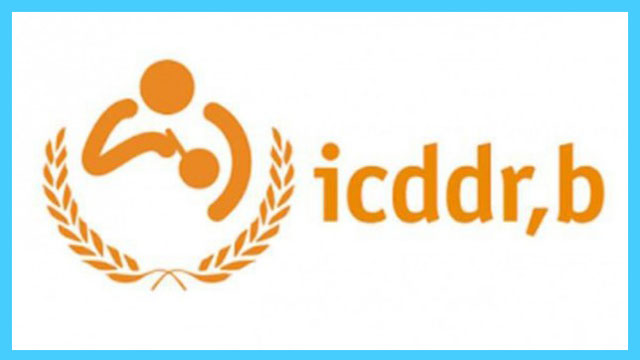At least 67 children below the age of five die of pneumonia every day in Bangladesh as hospitals are largely unequipped to treat such patients, according to studies.
About 46 children below five per 1,000 live births die in Bangladesh and the top cause of their deaths is pneumonia, local and international data showed.
Over 52 per cent of the children suffering from pneumonia die at home without any care.
The children who are taken to hospitals are not properly treated as the health facilities are largely unequipped as some hospitals are operating even without the equipment for pulse oximetry, needed to measure the oxygen levels of children, experts said citing the studies at a discussion.
The experts believe that despite being the major killer of children, pneumonia is not getting adequate attention from the concerned quarters.
The discussion titled ‘Storytelling with data on childhood pneumonia in Bangladesh: What works and how’ was organised jointly by the ICDDR,B, the Data for Impact of the University of North Carolina at Chapel Hill, USA and the USAID at the ICDDR,B auditorium.
Referring to Johns Hopkins University’s Pneumonia and Diarrheal Progress Report 2020, ICDDR,B Maternal and Child Health Division associate scientist Ahmed Ehsanur Rahman said that 45 children below 5 per 1,000 live births die in Bangladesh, but the prime cause of the deaths is pneumonia.
In 2011, the top cause of children’s death in Bangladesh was pneumonia and it remained in the top position in 2017-18, Ahmed added.
He said that 52 per cent of the children who die of pneumonia die at home without receiving any care while 45 die at hospitals and 3 per cent die at home after consultations with doctors.
The World Health Organisation recommends 10 essential facilities at hospitals for the treatment of pneumonia.
But the hospitals in Bangladesh even lack zinc tablets, oral saline, amoxicillin and paracetamol.
Equipment like thermometer, child scale, growth chart are also missing at many health facilities in the country, not to mention the lack of trained staff, Ahmed said, adding that as result following treatment guideline remains a far cry.
Pulse oximeter is a vital tool to understand the oxygen level of pneumonia suffering children, but only 27 per cent district hospitals have the device while 18 per cent upazila level hospitals, 17 per cent maternal and child welfare centre have the equipment.
Pulse oximeters are also not available at union-level facilities.
Oxygen therapy is crucial for pneumonia patients the facility is also missing at most of the hospitals in the country.
Only 40 per cent district hospitals have oxygen concentrator, 58 per cent district hospitals have filled oxygen cylinder with flow meter, 52 per cent district hospitals have filled oxygen cylinder without flow meter, 18 per cent district hospitals have oxygen distributor system and 66 per cent district hospitals have one of the four types of oxygen support system.
The situations at upazila and union-level maternal and child welfare centres are worse.
Ahmed said that Bangladesh is committed to reducing child mortality caused by pneumonia into half by 2025, but that would not be possible if double efforts are made.
ICDDR,B maternal and child health division head of research Quamrun Nahar said that Bangladesh made some progress in reducing child mortality, but the situation did not improve in the case of pneumonia deaths.
She feared that the situation would deteriorate due to the COVID-19 outbreak.
Child Specialist and Paediatric Pulmonologist at Dhaka Shishu Hospital Ruhul Amin said that a large portion of the pneumonia deaths could be prevented by taking some measures like exclusive breast feeding up to six months, complementary homemade food alongside breast feeding up to two years and prompt treatment when the children show symptoms of pneumonia.
Child Health Research Foundation executive director Samir Saha stressed the need for improving the health facilities and the detection of the trend of virus and bacteria of pneumonia in the country.
ICDDR,B hospital division senior scientist Jobayer Chisti said that oxygen therapy delivered by low-cost bubble with continuous positive airway pressure is an effective tool to treat children with pneumonia.
At least 75 per cent of pneumonia deaths could be prevented by the bubble CPAP which costs merely Tk 150 to Tk 200, but this tool is yet to be introduced in the country.
ICDDR,B senior director Shams El Arifeen, USAID senior monitoring, evaluation and research advisor
Kanta Jamil, University of North Carolina at Chapel Hill researcher Shusmita Khan, among others, were present.
mj/





